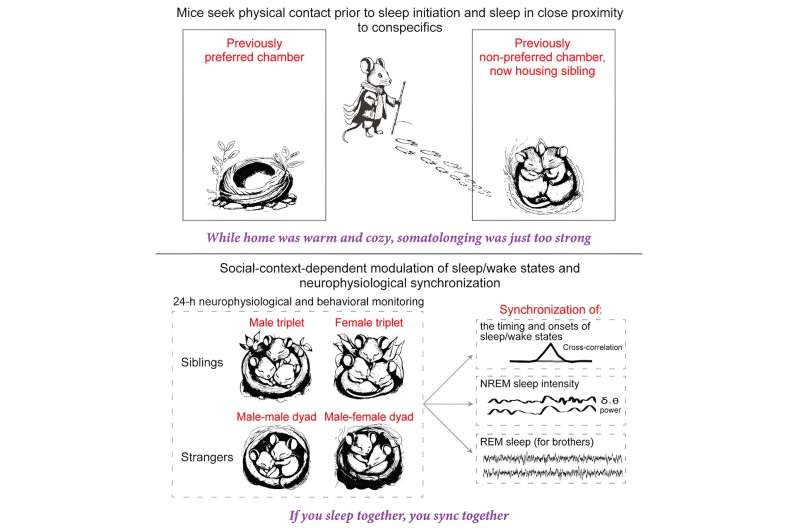This article has been reviewed according to Science X's editorial process and policies. Editors have highlighted the following attributes while ensuring the content's credibility:
fact-checked
peer-reviewed publication
trusted source
proofread
Sleep may be compromised with a bed partner

If you're having trouble sleeping, perhaps contact with a bedmate is causing the problem, say University of Michigan researchers.
Ada Eban-Rothschild, assistant professor in U-M's Department of Psychology, and colleagues tracked the sleep behavior of mice while in a social context. They noticed that these small rodents seek physical contact prior to sleep initiation and cuddle up during sleep. They further show that cuddling during sleep is driven by an inner motivation for prolonged physical contact, which they termed "somatolonging."
The study, published in Current Biology, highlights the strong need for social contact in species other than humans.
"The lack of this kind of contact was evident during the COVID-19 pandemic, during which people experienced somatolonging," Eban-Rothschild said.
Cuddling during sleep doesn't come without a cost; the mice often disrupt each other's sleep. Similarly, in humans, co-sleeping isn't always positive, and insomnia can be transmitted between bed partners. So, why do humans and other animals willingly choose situations that might compromise their sleep? Researchers don't yet know.
On the other hand, co-sleeping individuals show synchronization in multiple neurophysiological measures, including the timing of sleep/wake onset and REM sleep. In the study, the researchers used advanced wireless devices and video recordings to monitor multiple mice within a group for 24 hours simultaneously.
The mice were willing to forgo their preferred sleep location to gain access to social contact. This suggests that the motivation for prolonged physical contact drives huddling behavior, the researchers said.
They also noticed coordination in multiple neurophysiological features among co-sleeping individuals, including in the timing of falling asleep and waking up and sleep intensity.
Notably, the timing of rapid eye movement, or REM, sleep was synchronized among co-sleeping male siblings but not among co-sleeping female siblings or unfamiliar mice. This suggests that an individual's internal state, such as feeling safe, controls the degree of synchronization.
More information: Maria I. Sotelo et al, Neurophysiological and behavioral synchronization in group-living and sleeping mice, Current Biology (2023). DOI: 10.1016/j.cub.2023.11.065




















